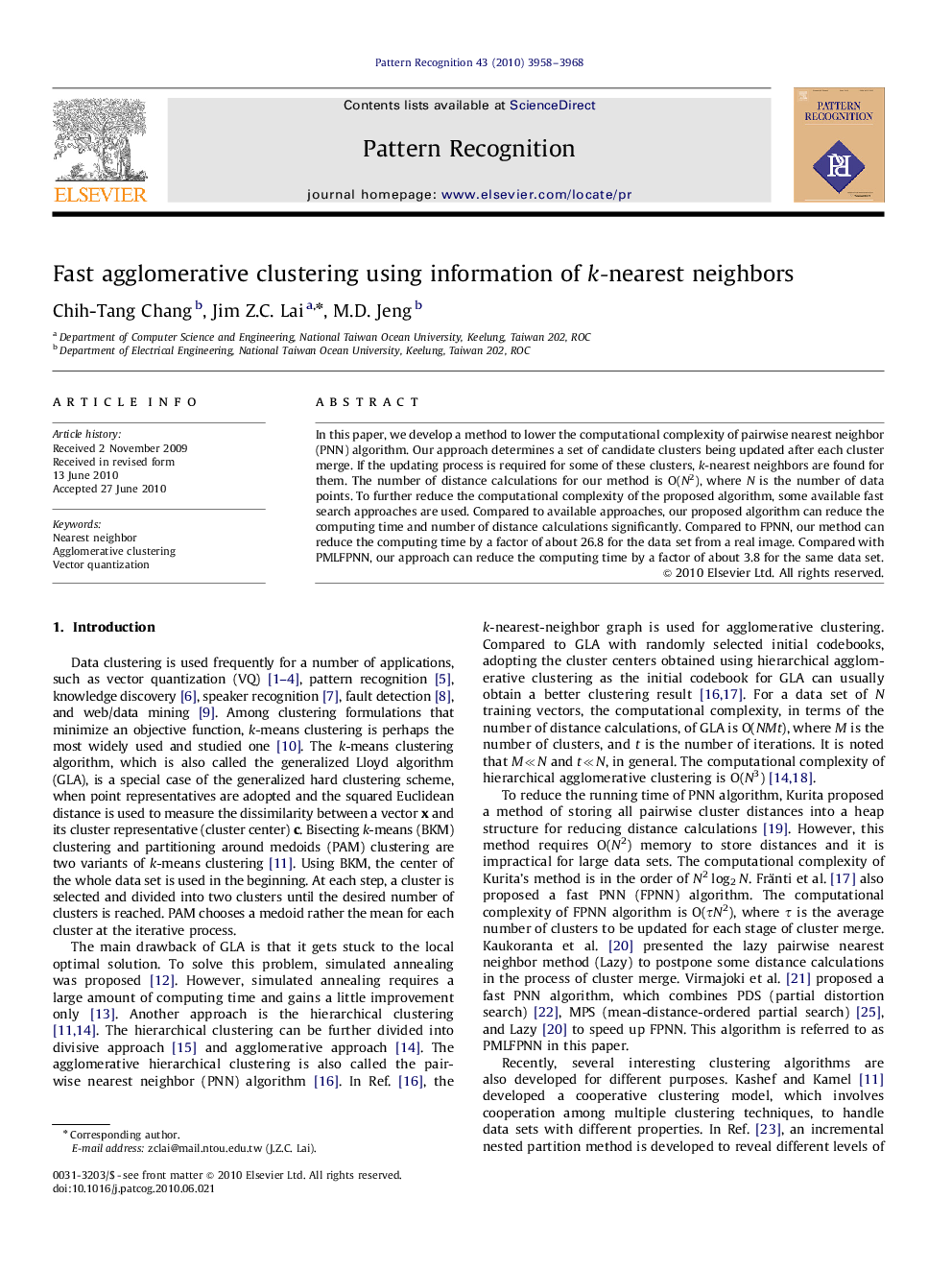| Article ID | Journal | Published Year | Pages | File Type |
|---|---|---|---|---|
| 530485 | Pattern Recognition | 2010 | 11 Pages |
In this paper, we develop a method to lower the computational complexity of pairwise nearest neighbor (PNN) algorithm. Our approach determines a set of candidate clusters being updated after each cluster merge. If the updating process is required for some of these clusters, k-nearest neighbors are found for them. The number of distance calculations for our method is O(N2), where N is the number of data points. To further reduce the computational complexity of the proposed algorithm, some available fast search approaches are used. Compared to available approaches, our proposed algorithm can reduce the computing time and number of distance calculations significantly. Compared to FPNN, our method can reduce the computing time by a factor of about 26.8 for the data set from a real image. Compared with PMLFPNN, our approach can reduce the computing time by a factor of about 3.8 for the same data set.
